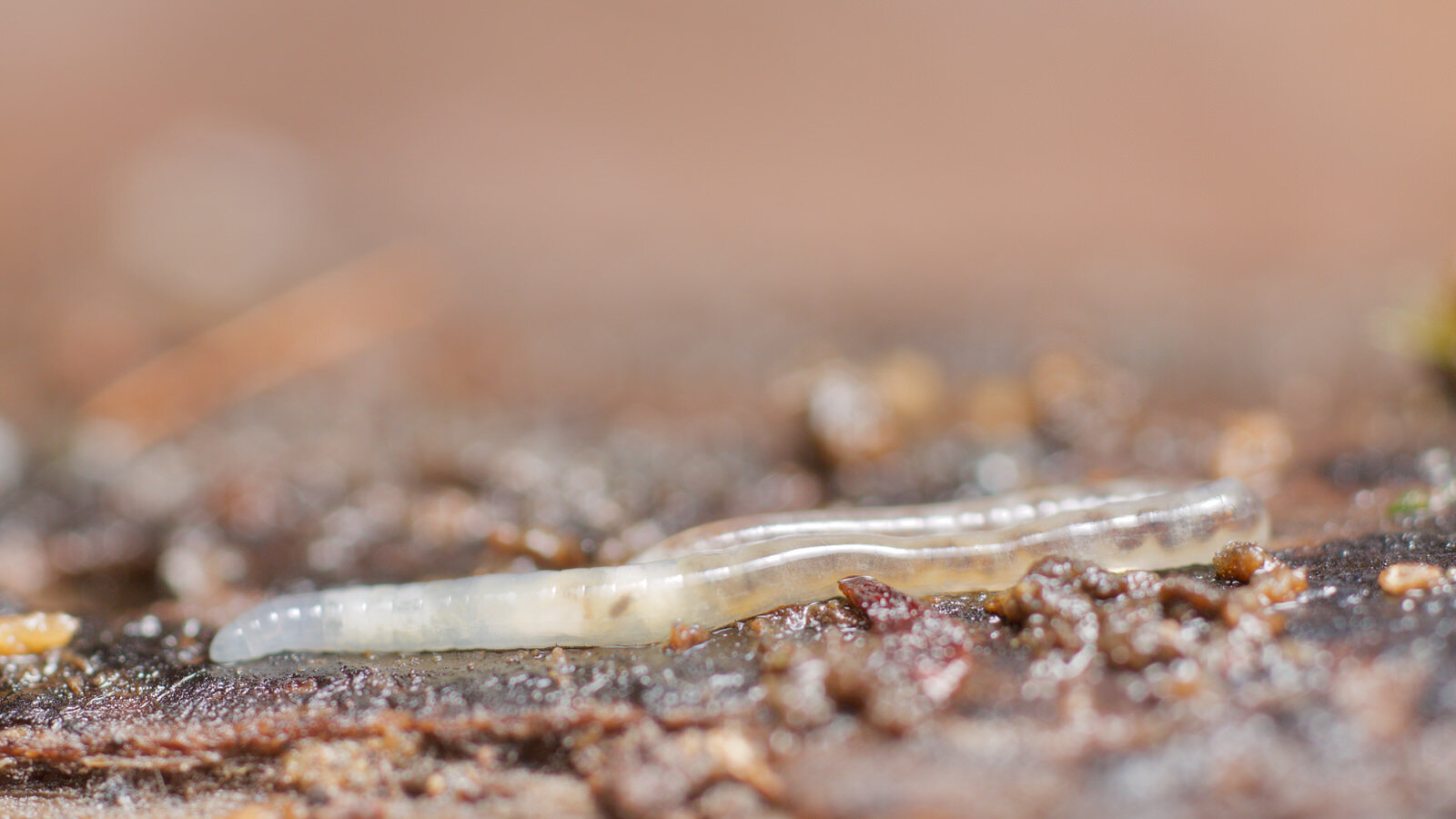
The enchytraeids, or pot worms
The Enchytraeidae are a very common group of normally un-pigmented terrestrial oligochaeta, commonly known as pot worms. Their name comes from them often being noticed in the moist compost when gardeners are transplanting plants to bigger pots.
It’s more than likely that, as with many other members of the soil fauna communities, their origin lies in the ancient forest soils of cool temperate regions.
They are basically a miniaturised version of an earthworm, but are unable to consume leaf matter and detritus in the same way. They seem instead to gain most of their nutrients by consuming fungal hyphae and bacterial material, together with the frass or excreta from other soil animals. Enchytraeids can be large enough to contribute to soil porosity through burrowing, along with their bigger cousins. The enormous amounts of casts produced and the mucus secretions they leave behind in their burrows hugely influences the bacterial and mineral content of the region they inhabit- known as the drilosphere.
One genus of enchytraeids, Mesenchytraeus, contains species commonly known as ice worms. They are often black in colour and are capable of not only surviving in glacial ice, but living their entire life cycle in that harsh environment, dying if exposed to temperatures much above freezing. Their food source seems reliant on ice algae, transported in by the wind.
Enchytraeid, Tairua, New Zealand, March 2016
Another well known enchytraeid is the Grindal worm, Enchytraeus buchholzi used mainly as an easy to produce fish food.
The Enchytraeidae are likely mainly responsible for ‘collembolan soil’, an often earthworm poor or earthworm-free, acidic compacted humic layer below a layer of organic matter as typically found in a coniferous forest.
Enchytraeid, Burrington Combe, Somerset February 2019
Enchytraeid, East Pennard, Somerset
Enchytraeid, Compton Dundon, February 2019


